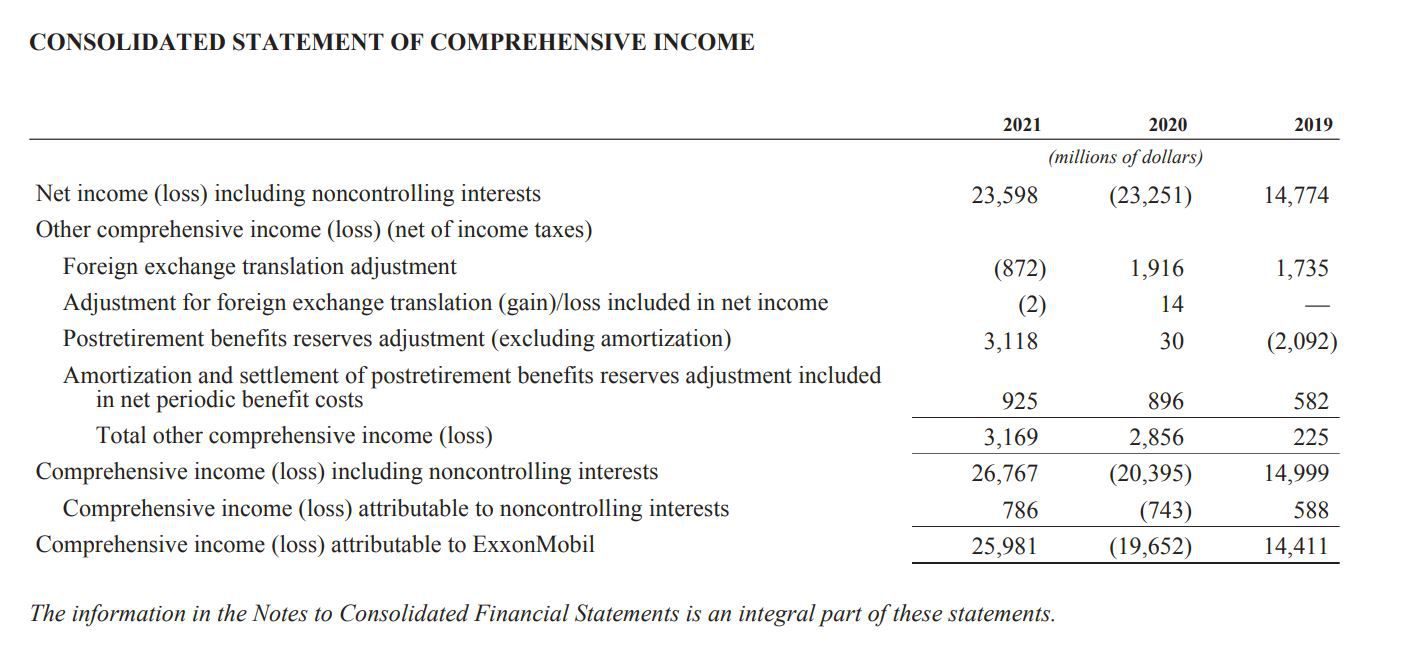

Finance
How Does A Corporate Credit Card Work
Published: October 25, 2023
Learn how corporate credit cards work and how they can benefit your business. Discover the key features and advantages of corporate credit cards in managing finance effectively.
(Many of the links in this article redirect to a specific reviewed product. Your purchase of these products through affiliate links helps to generate commission for LiveWell, at no extra cost. Learn more)
Table of Contents
- Introduction
- What is a Corporate Credit Card?
- How Does a Corporate Credit Card Differ from a Personal Credit Card?
- Benefits of Using a Corporate Credit Card
- How Does a Corporate Credit Card Work?
- Applying for a Corporate Credit Card
- Setting Credit Limits and Cardholder Policies
- Tracking and Monitoring Expenses
- Repaying Corporate Credit Card Charges
- Reporting and Reconciling Corporate Credit Card Expenses
- Managing Employee Misuse or Fraud
- Conclusion
Introduction
In today’s fast-paced corporate world, managing expenses efficiently is essential for the success of any organization. One tool that many companies rely on is the corporate credit card. A corporate credit card is a financial instrument specifically designed to meet the needs of businesses, allowing them to streamline their expense management processes and provide employees with a convenient way to make purchases on behalf of the company.
Unlike personal credit cards, which are tied to an individual’s credit history, a corporate credit card is issued in the name of the business entity. It provides a designated line of credit that employees can use to make business-related purchases, such as office supplies, travel expenses, and client entertainment.
Corporate credit cards offer a range of features and benefits that are tailored to the needs of businesses. They provide enhanced spending control, increased security, and streamlined expense tracking, making them an indispensable tool for effective financial management.
In this article, we will explore how corporate credit cards work, the key differences between corporate and personal credit cards, and the benefits they offer to businesses. We will also delve into the application process, credit limits, expense tracking, repayment methods, and how to handle potential misuse or fraud. By the end of this article, you will gain a comprehensive understanding of how corporate credit cards can revolutionize your company’s financial operations.
What is a Corporate Credit Card?
A corporate credit card is a financial tool that allows businesses to provide employees with a designated line of credit to make business-related purchases. It acts as a form of payment for goods and services and is issued in the name of the company rather than an individual. Corporate credit cards are typically linked to a credit account that the business establishes with a financial institution.
Unlike personal credit cards, which are tied to an individual’s credit history and require personal liability for repayment, corporate credit cards are tied to the business entity. This means that the company assumes responsibility for repaying the charges made on the card, rather than the individual cardholder.
One key distinction of a corporate credit card is that it enables organizations to have more control over how funds are used. Credit limits can be set for each cardholder, and spending can be restricted to specific categories or merchant types. This control allows companies to manage expenses more effectively and prevent misuse.
Corporate credit cards offer a wide range of benefits for businesses. They streamline the purchasing process, eliminate the need for employees to use personal funds for business expenses, and provide a centralized platform for expense tracking and reporting. Furthermore, corporate credit cards often come with additional features like rewards programs, travel insurance, and special discounts or offers tailored specifically for businesses.
Overall, a corporate credit card is a powerful financial tool that helps organizations enhance their financial management practices, improve cash flow, and simplify expense tracking and reporting. By leveraging the benefits of a corporate credit card, businesses can optimize their operations and provide employees with a convenient and efficient way to make business-related purchases.
How Does a Corporate Credit Card Differ from a Personal Credit Card?
While both corporate credit cards and personal credit cards serve as a means of making purchases, there are several key differences between the two. These differences are important to understand when considering the use of a corporate credit card for business purposes.
Liability: One of the main distinctions between a corporate credit card and a personal credit card is the liability for repayment. With a personal credit card, the individual cardholder is personally responsible for repaying the charges. In contrast, with a corporate credit card, the liability lies with the company. This means that the business is responsible for paying off the card’s balance, even if individual employees made the charges.
Credit Limit: Corporate credit cards typically have higher credit limits compared to personal credit cards. This is because businesses often have higher purchasing needs and larger spending capacities. The higher credit limits on corporate credit cards allow employees to make larger purchases on behalf of the company without having to rely on their personal credit limits.
Expense Tracking: Corporate credit cards offer more robust expense tracking and reporting capabilities compared to personal credit cards. Businesses can easily track and categorize expenses made on corporate credit cards, which simplifies the process of budgeting, financial analysis, and tax preparation. Personal credit cards, on the other hand, may provide basic expense tracking features, but they are not as comprehensive as those offered by corporate credit cards.
Employee Authorization: Corporate credit cards require authorization from the business before they can be issued to employees. The company determines which employees are eligible for a corporate credit card based on their positions, responsibilities, and the need for making authorized purchases on behalf of the organization. Personal credit cards, on the other hand, can be obtained by individuals without any authorization or approval from their employer.
Spending Controls: Corporate credit cards offer enhanced spending controls compared to personal credit cards. Companies can set specific spending limits for each employee who is issued a corporate credit card, ensuring that purchases fall within the authorized budget. Additionally, businesses can restrict spending to certain categories or merchant types, further controlling how funds are used. Personal credit cards do not typically offer the same level of spending control.
Rewards and Benefits: Corporate credit cards often come with specific rewards programs and benefits tailored to the needs of businesses. These can include cashback rewards on business expenses, travel insurance, access to airport lounges, and discounts on various business services. Personal credit cards may offer different types of rewards and benefits, but they are typically designed for personal use rather than for the specific needs of businesses.
In summary, while both personal and corporate credit cards serve as a payment tool, corporate credit cards offer additional features and benefits that cater specifically to the needs of businesses. From enhanced expense tracking and spending controls to greater liability protection, corporate credit cards provide businesses with a powerful financial management tool.
Benefits of Using a Corporate Credit Card
Utilizing a corporate credit card can bring numerous advantages to businesses. Whether you’re a small startup or a large corporation, the benefits of using a corporate credit card extend beyond simple payment convenience. Here are some key advantages:
Streamlined Expense Tracking: Corporate credit cards offer robust expense tracking features, allowing businesses to easily monitor and categorize expenses made by employees. This simplifies the process of budgeting, financial reporting, and tax preparation. With detailed transaction records, businesses can accurately track spending patterns and identify areas where cost savings can be achieved.
Improved Cash Flow: By using a corporate credit card, businesses can extend their payment terms and free up cash flow. Rather than paying suppliers immediately, the company can benefit from the grace period provided by the credit card issuer. This allows businesses to use their available cash for other strategic purposes and take advantage of early payment discounts when they are offered.
Increased Purchasing Power: Corporate credit cards typically have higher credit limits compared to personal credit cards. This higher purchasing power enables businesses to make necessary acquisitions, such as office supplies, equipment, and other operational expenses, without straining cash reserves or relying on individual employee credit limits.
Enhanced Spending Control: Corporate credit cards provide businesses with a level of spending control that personal credit cards do not offer. Companies can set credit limits for individual employees and restrict spending to specific categories or merchant types. This ensures that expenses are within authorized budget limits and helps prevent unauthorized purchases or misuse of funds.
Expense Consolidation: Using a corporate credit card allows businesses to consolidate expenses onto a single account. This simplifies the reconciliation and payment processes, reducing administrative burdens. With a consolidated view of expenditures, businesses can easily track and analyze spending patterns, identify cost-saving opportunities, and negotiate better rates with suppliers.
Rewards and Incentives: Many corporate credit card programs offer rewards and incentives tailored specifically for businesses. These can include cashback rewards on business expenses, travel rewards, airline miles, access to airport lounges, and discounts on various business services. By taking advantage of these rewards, businesses can save money and benefit from additional perks.
Improved Financial Security: Corporate credit cards provide an extra layer of security for business transactions. They often come with fraud protection and liability coverage, protecting businesses from unauthorized charges. Additionally, using corporate credit cards reduces the need for employees to use their personal funds for business expenses, minimizing potential reimbursement issues and ensuring a clear separation between personal and business finances.
Simplified Expense Reporting: By using corporate credit cards, employees can easily and accurately report their business expenses. This simplifies the reimbursement process and reduces paperwork. With detailed transaction records, businesses can quickly review, approve, and reconcile expenses, saving time and streamlining financial operations.
Overall, the benefits of using a corporate credit card extend beyond convenience and payment facilitation. From enhanced expense tracking and improved cash flow to increased spending control and rewards programs, corporate credit cards offer businesses a comprehensive financial management tool. By leveraging these benefits, companies can optimize their operations, improve financial efficiency, and achieve greater value for their expenses.
How Does a Corporate Credit Card Work?
A corporate credit card operates similarly to a personal credit card, but with specific features and functionalities designed for businesses. Here is a breakdown of how a corporate credit card works:
Issuance: A corporate credit card is typically issued in the name of the business entity. The company establishes a credit account with a financial institution, and individual cards are then issued to authorized employees on behalf of the company. The number of cards and credit limits are determined by the business based on employee roles and spending needs.
Spending: Once an employee is issued a corporate credit card, they can use it to make authorized business-related purchases. These purchases can include office supplies, travel expenses, client entertainment, and other necessary expenditures. The employee can present the card for payment or use it to make online or telephone transactions, just like with a personal credit card.
Credit Limit: Each corporate credit card issued to an employee has a predetermined credit limit. This limit is set by the company and is specific to the cardholder. It ensures that employees do not exceed their authorized spending limits and helps control expenses within the approved budget.
Expense Tracking: Corporate credit cards provide detailed transaction records, which simplify the tracking of expenses. Each time the card is used for a purchase, the transaction is recorded and associated with the cardholder’s account. This information is then accessible to the company, allowing for accurate expense tracking and analysis.
Repayment: Unlike personal credit cards, where the individual cardholder is responsible for repayment, the business is liable for repaying the charges made on the corporate credit card. The credit card issuer will send monthly statements to the company, outlining the charges made on the card. The company is responsible for making timely payments to settle the outstanding balance.
Expense Reporting and Reconciliation: Corporate credit cards make it easier to report and reconcile expenses. Companies can review the monthly statements and cross-reference them with the employee’s expense reports to ensure accuracy. This streamlines the reimbursement process and eliminates the need for employees to use personal funds and file extensive reimbursement requests.
Monitoring and Control: Businesses can closely monitor the usage of corporate credit cards to prevent misuse and ensure compliance with company policies. Transactions can be reviewed regularly to identify any unauthorized or suspicious activities. Spending controls can be implemented, such as restricting purchases by category or merchant type, further ensuring that expenses align with business objectives.
Employee Misuse or Fraud: While corporate credit cards are a powerful financial tool, there is a potential risk of misuse or fraud. To mitigate these risks, companies can implement policies and procedures to monitor card usage, set spending limits, and promptly address any concerns or issues that arise. It is crucial for businesses to have clear guidelines in place and provide training to employees on the proper use of corporate credit cards.
By understanding how a corporate credit card works and effectively managing its usage, businesses can benefit from enhanced cash flow, improved expense tracking, increased financial control, and streamlined financial operations. This financial tool offers convenience, security, and efficiency, empowering businesses to optimize their financial management practices and operate more effectively.
Applying for a Corporate Credit Card
To apply for a corporate credit card, businesses need to follow a specific process tailored to their organization’s needs. Here are the key steps involved in applying for a corporate credit card:
Evaluate Options: Start by researching financial institutions and credit card providers that offer corporate credit card programs. Compare their offerings, fees, interest rates, rewards programs, and features to find the one that best aligns with your business requirements.
Requirements: Understand the eligibility criteria set by the credit card provider. Typically, businesses need to have a strong credit history, a certain revenue threshold, and a legal business entity, such as a corporation or LLC. Additionally, the provider may require financial statements, tax identification numbers, and other documentation to assess the business’s financial stability.
Application Process: Contact the chosen credit card provider to initiate the application process. They will provide you with the necessary forms and documentation requirements. Fill out the application forms accurately, ensuring all required information is provided. Some providers may also require additional information, such as the number of anticipated cardholders and the purpose of the credit card program.
Credit Evaluation: The credit card provider will review the business’s creditworthiness to determine the credit limit and terms of the corporate credit card. The evaluation may include a credit check, analysis of financial statements, and assessment of the business’s payment history. The credit evaluation helps the provider assess the level of risk associated with extending credit to the business.
Cardholder Designation: Determine which employees will be designated as cardholders. Consider factors such as their roles, responsibilities, and spending requirements. Establish policies and guidelines for cardholders to ensure proper usage and adherence to company spending limits.
Account Setup: Once the credit card application is approved, the credit card provider will set up an account for the business. The provider will assign a credit limit based on the business’s creditworthiness and the information provided during the application process. The credit card provider will issue the necessary number of corporate credit cards for designated employees.
Cardholder Training: It’s crucial to provide training to cardholders on the proper use of corporate credit cards. Educate them on company policies, spending limits, expense reporting procedures, and the consequences of misuse or fraud. Training ensures that employees understand their responsibilities and use the corporate credit card in accordance with company guidelines.
Implement Controls and Reporting: Establish controls and reporting mechanisms to monitor corporate credit card usage. This includes regularly reviewing transaction records, implementing spending limits, and analyzing expense reports. These controls help prevent unauthorized use of the card and ensure compliance with company policies and budgetary constraints.
Review and Adjust: Regularly assess the effectiveness of your corporate credit card program. Review spending patterns, evaluate the benefits and rewards received, and identify areas for improvement. Make necessary adjustments to credit limits, spending controls, and policies to optimize the program and better align it with your business requirements.
Applying for a corporate credit card can provide businesses with a range of benefits, including improved expense management, enhanced financial control, and streamlined reporting. By following the application process and implementing proper controls, businesses can leverage corporate credit cards as a valuable tool in their financial management arsenal.
Setting Credit Limits and Cardholder Policies
Setting credit limits and cardholder policies is an essential step in effectively managing a corporate credit card program. Establishing clear guidelines ensures responsible card usage, prevents overspending, and helps maintain financial control. Here are some key considerations when setting credit limits and cardholder policies:
Evaluate Spending Needs: Assess the spending needs of different departments and employees within your organization. Consider factors such as job responsibilities, travel requirements, and purchasing authority. This evaluation will help determine the appropriate credit limits for each cardholder.
Differentiate Credit Limits: Set credit limits for each individual cardholder based on their authorized spending requirements and the business’s overall budget. Differentiating credit limits ensures that employees have access to the necessary funds while maintaining financial control.
Consider Risk and Liability: Take into account the risk associated with extending credit to different employees. Those who handle significant expenses or have access to sensitive financial information may require lower credit limits to minimize potential risks. Liability for misuse or fraudulent activity also guides the determination of credit limits.
Establish Spending Categories: Categorize expenditures to manage spending effectively. You can allocate credit limits by specific spending categories, such as travel, office supplies, or client entertainment. This helps control spending within budgetary constraints and prevents misuse of funds.
Define Purchase Authorization: Clearly define the types of purchases that are authorized on the corporate credit card. Establish parameters for which expenses are acceptable and which are prohibited. This includes specifying specific merchant types, allowable expenditure amounts, and any restrictions that align with company policies.
Implement Spending Controls: Put in place spending controls to ensure compliance with budgetary and policy requirements. This can include predefined spending limits, transaction limits, or daily limits. These controls help prevent unauthorized or excessive spending, promoting responsible card usage.
Expense Reporting Guidelines: Clearly communicate the expense reporting process to cardholders. Establish guidelines for submitting timely and accurate expense reports, including the required documentation and formats. This ensures consistency and facilitates the reconciliation of corporate credit card charges.
Periodic Review and Adjustments: Regularly review and adjust credit limits and cardholder policies to meet changing business needs. Analyze spending patterns and adjust credit limits to align with budgetary constraints. Revise policies based on feedback from cardholders and changes in company objectives or industry regulations.
Training and Education: Provide comprehensive training to cardholders on credit limit guidelines, spending controls, and card usage policies. Educate employees on their responsibilities, including the proper documentation and reporting procedures. This helps ensure compliance, reduces the risk of misuse, and fosters a culture of financial responsibility within the organization.
Setting credit limits and cardholder policies is a critical aspect of successfully managing a corporate credit card program. By carefully considering spending needs, implementing controls, and establishing clear guidelines, businesses can maintain financial control, prevent misuse, and optimize their corporate credit card program for maximum effectiveness.
Tracking and Monitoring Expenses
Tracking and monitoring expenses is a crucial component of effectively managing a corporate credit card program. By having a robust system in place, businesses can accurately track expenditures, analyze spending patterns, and ensure compliance with company policies. Here are key considerations for tracking and monitoring expenses:
Automated Expense Tracking: Leverage technology and software solutions to automate the tracking of corporate credit card expenses. Many financial management platforms offer features that synchronize credit card transactions and categorize expenses automatically. This not only saves time but also reduces the potential for human error.
Expense Categories: Establish a consistent and comprehensive categorization system for expenses. Define categories that align with your business needs, such as travel, office supplies, software subscriptions, or client entertainment. Categorizing expenses allows for better analysis and reporting, helping businesses understand where their money is being spent.
Regular Review of Transactions: Regularly review credit card transactions to monitor spending and identify any potential issues or discrepancies. This can be done on a weekly or monthly basis, depending on the volume and frequency of card usage. Pay attention to any irregularities or unauthorized charges that may require further investigation.
Documenting Receipts: Require employees to submit receipts for all corporate credit card purchases. Receipts provide evidence of the expense and help with accurate recording and reconciliation. Consider implementing a policy that specifies the required documentation and the timeframe for submitting receipts.
Exception Reporting: Implement a mechanism for identifying and flagging exceptional or high-risk transactions. This could include transactions that exceed specified spending thresholds, purchases made outside of authorized merchant categories, or suspicious transactions that may indicate fraud or misuse. Analyzing and addressing such exceptions promptly can help prevent financial losses and protect the organization’s financial security.
Reporting and Analytics: Utilize reporting and analytics tools to gain insights into spending patterns. Generate regular reports that highlight expense trends, identify areas of overspending or cost savings, and track adherence to budgetary constraints. Analyzing these reports allows businesses to make informed decisions about optimizing their spending and maximizing the value of their corporate credit card program.
Policy Compliance: Continuously communicate and reinforce corporate credit card policies and expense reporting guidelines to employees. Regularly educate cardholders on proper usage, documentation requirements, and reporting procedures. This helps ensure compliance, reduces the risk of unauthorized spending, and fosters a culture of financial responsibility within the organization.
Audits and Internal Controls: Conduct periodic internal audits to ensure adherence to expense policies and identify any potential gaps or weaknesses. These audits help maintain financial integrity and ensure that all expenses align with company objectives. Consider implementing a system of checks and balances, such as dual approvals for large expenses or regular review of expense reports by management.
Continuous Improvement: Regularly evaluate and refine your expense tracking and monitoring processes. Solicit feedback from cardholders and finance teams to identify areas for improvement and address any challenges or bottlenecks. Embrace technological advancements and consider adopting new tools or systems that can streamline expense tracking and reporting.
Tracking and monitoring expenses is crucial in maintaining financial control, preventing misuse, and optimizing the value of a corporate credit card program. By implementing clear policies, utilizing technology, and conducting regular reviews, businesses can effectively track expenses, make informed financial decisions, and ensure compliance with company policies and procedures.
Repaying Corporate Credit Card Charges
Repaying corporate credit card charges is a vital aspect of managing a corporate credit card program effectively. Timely repayment ensures the company maintains good financial standing and avoids unnecessary interest charges or penalties. Here are key considerations for repaying corporate credit card charges:
Payment Terms: Understand the payment terms set by the credit card provider. Typically, there is a billing cycle during which charges are accumulated, and a due date by which payment must be made. It is important to adhere to these payment terms to maintain a positive credit history.
Review Credit Card Statements: Regularly review credit card statements provided by the credit card provider. Carefully examine the charges to ensure accuracy and identify any discrepancies or unauthorized transactions. Promptly notify the credit card provider of any errors or discrepancies that require investigation.
Payment Methods: Determine the preferred method of payment for corporate credit card charges. Most credit card providers offer various options, such as electronic funds transfer (EFT), online payment portals, or traditional check payments. Choose a method that is convenient and aligns with the company’s financial operations.
Timely Payments: Make payments on time to avoid late fees, penalties, and negative impacts on credit history. Establish a process to ensure that payments are submitted in a timely manner, allowing sufficient time for processing before the due date. Consider setting up reminders or automatic payments to minimize the risk of missing payment deadlines.
Partial or Full Payments: Decide whether to make partial or full payments on each billing cycle. Full payment ensures the entire outstanding balance is paid, while partial payments allow for flexibility but may accrue interest charges on the remaining balance. Evaluate cash flow and financial needs to determine the most suitable payment approach.
Budget Considerations: Account for credit card payments in the company’s budget planning. Incorporate credit card expenses and payments into cash flow projections to ensure funds are available to cover the charges. This helps maintain financial stability and prevents cash flow gaps.
Interest and Fees: Be aware of the interest rates and fees associated with corporate credit card usage. Understand the terms and conditions outlined by the credit card provider, including potential penalties for late payments or exceeding the credit limit. Monitoring and managing these costs will help optimize the credit card program’s financial impact.
Reconciling Expense Reports: Reconcile corporate credit card charges with employee expense reports to ensure accuracy and compliance. Verify that all expenses reported by cardholders match the charges on the credit card statements. This process ensures that all expenses are properly recorded and accounted for.
Accounting Transparency: Maintain transparency in financial reporting by accurately recording credit card charges in the company’s accounting system. Track and categorize charges to enable accurate expense allocation, budget tracking, and financial analysis.
Financial Planning: Incorporate corporate credit card payments into long-term financial planning. Assess the overall impact of credit card expenses and payments on the company’s cash flow, profitability, and financial goals. Adjust budgetary allocations or spending priorities if necessary.
Repaying corporate credit card charges in a timely and responsible manner is essential for maintaining financial health and managing a successful credit card program. By understanding payment terms, reviewing statements, and implementing efficient processes, businesses can ensure smooth repayment procedures, minimize costs, and preserve positive credit standing.
Reporting and Reconciling Corporate Credit Card Expenses
Reporting and reconciling corporate credit card expenses is a crucial process to ensure accurate financial records and maintain transparency within the organization. By effectively managing this process, businesses can streamline expense tracking, simplify reimbursement procedures, and maintain compliance with internal policies and external regulations. Here are key considerations for reporting and reconciling corporate credit card expenses:
Expense Reporting Guidelines: Establish clear guidelines and procedures for employees to follow when reporting corporate credit card expenses. Communicate the required format, documentation, and deadlines for submission. This ensures consistency and facilitates the reconciliation process.
Expense Categorization: Implement a standardized categorization system for expenses made on corporate credit cards. This allows for better analysis, tracking, and reporting. Establishing specific categories, such as travel, meals, office supplies, or client entertainment, enables businesses to gain insights into spending patterns and make informed financial decisions.
Receipt Management: Enforce a policy requiring employees to keep and submit accurate receipts for every corporate credit card transaction. Receipts serve as evidence for expense verification and can be cross-referenced during the reconciliation process. Consider implementing digital receipt management systems to streamline the storage and retrieval of receipts.
Expense Reconciliation: Regularly reconcile credit card statements with employee expense reports and receipts. This involves verifying that the charges listed on the credit card statement align with the expenses documented by cardholders. Reconciliation helps identify any discrepancies or unauthorized charges that require further investigation or clarification.
Matching Transactions: Match each transaction listed on the credit card statement with the corresponding receipt or expense report. This ensures that expenses are accurately recorded and accounted for. Any incomplete or missing documentation should be followed up with the cardholder to maintain comprehensive financial records.
Expense Allocation: Allocate expenses to the appropriate cost centers or accounting codes in accordance with the company’s chart of accounts. Accurate allocation enables businesses to track spending by department, project, or activity, facilitating financial analysis and decision-making.
Expense Coding: Assign specific codes or labels to each expense to enable better tracking and analysis. This can include project codes, client codes, or any other relevant identifiers that align with the company’s reporting and analysis requirements. Consistent coding ensures accurate and meaningful financial reporting.
Reimbursement Process: Streamline the reimbursement process for the expenses incurred on corporate credit cards. Establish clear timelines and procedures for submitting expense reports, reviewing and approving them, and reimbursing employees. Consider implementing automated expense management systems to simplify the reimbursement process.
Financial Reporting: Include credit card expenses in the company’s financial reports and statements. Ensure that accurate records of credit card expenses are reflected in the appropriate financial periods, allowing for accurate budgeting, forecasting, and financial analysis.
Internal Controls: Implement internal controls to monitor and prevent fraudulent or unauthorized expenses. This includes conducting periodic audits to ensure compliance with expense reporting policies and identifying any irregularities that require investigation.
Compliance with Regulations: Ensure that reporting and reconciling processes comply with applicable regulations, such as tax reporting requirements or industry-specific regulations. Stay updated on any changes or updates in regulations to maintain compliance and avoid potential penalties or legal issues.
Effectively reporting and reconciling corporate credit card expenses is crucial for maintaining accurate financial records and transparency within the organization. By establishing clear guidelines, implementing efficient processes, and utilizing technology, businesses can streamline expense tracking, simplify reimbursement procedures, and ensure compliance with policies and regulations.
Managing Employee Misuse or Fraud
Managing employee misuse or fraud is a critical aspect of maintaining the integrity and security of a corporate credit card program. While corporate credit cards can streamline business expenses, there is a potential risk of misuse or fraudulent activity. Proactive measures must be taken to protect the organization’s financial resources and prevent unauthorized transactions. Here are key strategies for managing employee misuse or fraud:
Establish Clear Policies: Clearly communicate the expectations and guidelines for corporate credit card usage through a comprehensive policy. Outline authorized expenses, spending limits, documentation requirements, and consequences for misuse or fraudulent activity. Ensure all employees have access to this policy and understand their responsibilities.
Regular Monitoring and Review: Implement a system for regularly monitoring and reviewing credit card transactions. This involves scrutinizing credit card statements, expense reports, and receipts to detect any suspicious or unauthorized charges. Conduct periodic audits to identify potential fraudulent activities or policy violations.
Expense Documentation: Require employees to provide accurate and complete documentation for all expenses, including receipts and expense reports. This ensures transparency and accountability, making it easier to identify discrepancies or fraudulent charges during the review process.
Review Spending Patterns: Analyze spending patterns and compare them to historical data or industry benchmarks. Look for any anomalies or unusual transactions, such as consistently high spending, frequent purchases from unauthorized merchants, or patterns that deviate from established spending profiles. These can be indicators of potential misuse or fraud.
Implement Checks and Balances: Implement a system of checks and balances to reduce the risk of fraudulent activities. This can include requiring pre-authorization for certain types of expenses, implementing dual approval processes for large transactions, or conducting periodic reconciliations to mitigate the risk of manipulated records.
Training and Education: Provide comprehensive training to employees on the proper use of corporate credit cards, as well as the consequences of misuse or fraudulent activity. Educate employees about the importance of safeguarding company resources and the potential legal and disciplinary consequences of fraudulent actions.
Fraud Detection Tools: Utilize fraud detection tools and software to identify and prevent unauthorized transactions. These tools can include real-time alerts for unusual spending patterns, transaction monitoring systems, and artificial intelligence-driven software that detects anomalies and potentially fraudulent activity.
Reporting Mechanisms: Create an anonymous reporting mechanism for employees to report suspected misuse or fraudulent activity. Encourage a culture of transparency and whistleblower protection to ensure that employees feel empowered to report any concerns without fear of retaliation.
Conduct Investigations: If fraud or misuse is suspected, promptly conduct thorough investigations. Follow established protocols and work with relevant departments, such as internal audit or legal, to gather evidence, interview involved parties, and determine appropriate disciplinary actions or legal measures if required.
Strengthen Internal Controls: Continuously strengthen internal controls to minimize the risk of fraud or misuse. This includes periodic reviews of policies and procedures, implementing segregation of duties, and conducting regular training and awareness campaigns to keep employees vigilant and informed.
Legal and Disciplinary Actions: Establish a clear protocol for handling instances of proven misuse or fraud. Depending on the severity of the offense, this may involve disciplinary actions, termination of employment, and, if necessary, legal actions to recover any misappropriated funds.
By implementing these strategies, businesses can proactively manage and mitigate the risks associated with employee misuse or fraud related to corporate credit cards. An effective approach to managing employee misuse or fraud helps protect the organization’s financial assets, maintain compliance with policies and regulations, and ensure the integrity of the corporate credit card program.
Conclusion
Corporate credit cards are a powerful financial tool that can greatly benefit businesses of all sizes. They provide a streamlined and convenient way to manage expenses, enhance financial control, and improve cash flow. By understanding how corporate credit cards work and implementing best practices, businesses can leverage these cards to optimize their financial management practices and drive success.
Throughout this article, we have explored the key aspects of corporate credit cards, including their benefits, differences from personal credit cards, application process, setting credit limits and cardholder policies, expense tracking and monitoring, repayment procedures, reporting and reconciliation, and strategies for managing employee misuse or fraud.
Corporate credit cards offer businesses a range of benefits, such as streamlined expense tracking, improved cash flow, increased purchasing power, enhanced spending control, rewards, and financial security. Setting credit limits and cardholder policies helps businesses maintain financial control and prevent overspending. Tracking and monitoring expenses through proper documentation, reconciling credit card statements, and analyzing spending patterns enable businesses to maintain accurate financial records and make informed financial decisions.
Repaying corporate credit card charges in a timely manner is crucial to maintaining financial health and avoiding unnecessary penalties. Reporting and reconciling corporate credit card expenses ensures accurate financial records, transparency, and compliance with policies and regulations. Effective management of employee misuse or fraud involves establishing clear policies, monitoring transactions, implementing internal controls, providing training and education, and promptly addressing any potential issues.
By implementing these best practices, businesses can optimize their corporate credit card programs, streamline expense management, improve financial control, and ultimately drive financial success. It is essential to periodically review and refine these processes to adapt to changing business needs and industry trends.
In conclusion, corporate credit cards offer businesses a powerful tool for managing expenses effectively. By understanding how they work and implementing proper procedures, businesses can unleash the full potential of corporate credit cards to streamline financial operations, strengthen financial management practices, and achieve long-term success.














